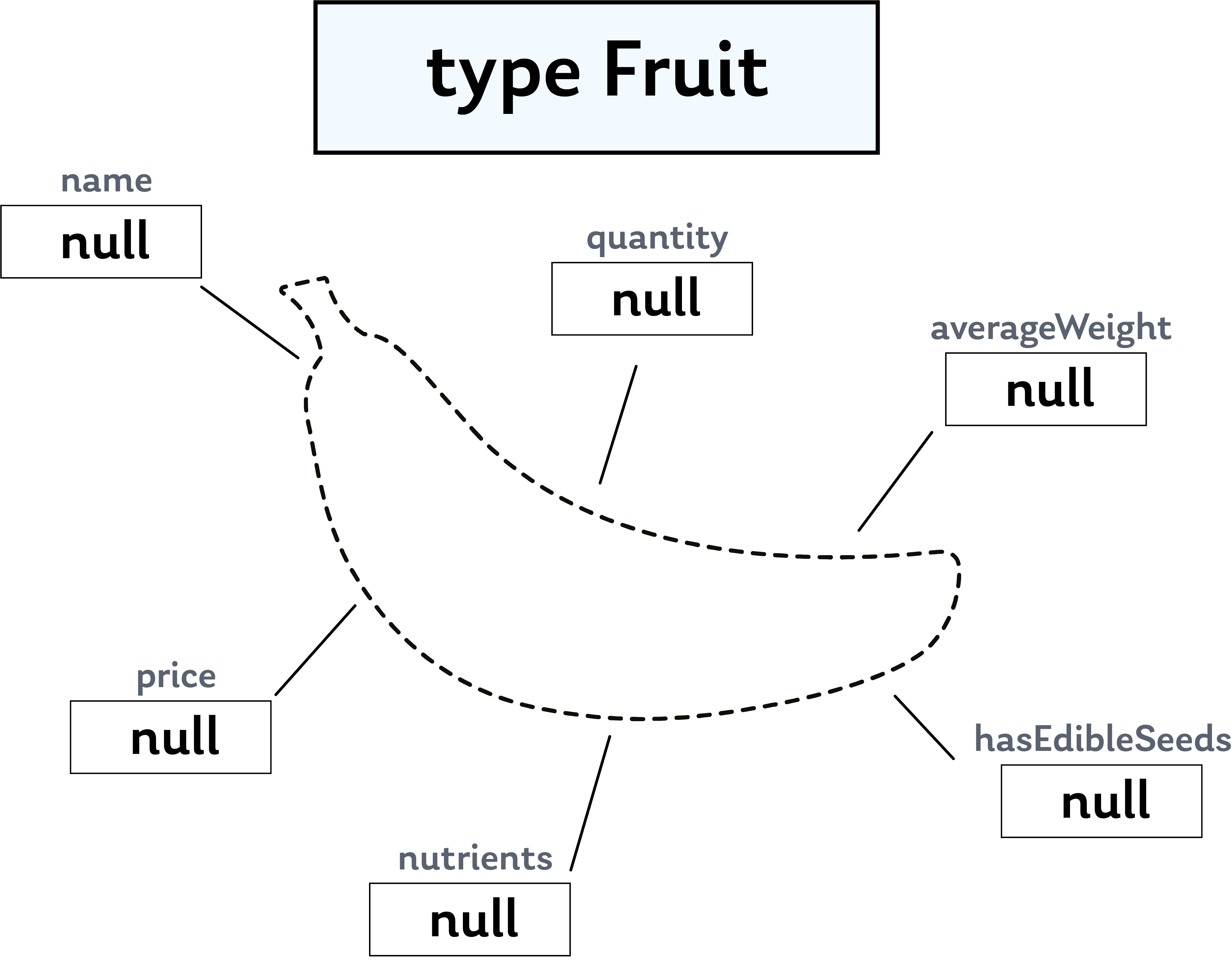Experience GraphQL Summit 2025: Register now →
Connect everything. Build anything. Register for GraphQL Summit 2025 →
Nullability
Nullability describes whether or not a field is allowed to return null, the programming value for nothing.

Setting non-nullability
When we want to allow a field to return a null value in GraphQL, we don't need to change anything about its definition. The field's name, along with the type of data it returns, is all the configuration we need to allow null as a possible return value.
But when we want to express that a field should never return null—that is, we want to require that we ALWAYS get a value back that matches the field's expected type—we can attach an exclamation point (!).
This is the Non-Null type, and like List, it's considered a "wrapping type." This means that we attach it to a field's data type definition. Whatever comes directly before the exclamation point is the element that cannot be null. This rule becomes essential when decoding more complex types where the List and Non-Null types are combined.
nutrients: [String!]!
Beginning from the outside and moving inward:
- The
nutrientsfield returns aListtype and, regardless of what's inside of the list, the list itself cannot benull. At the very least, it can be empty, returning a value of[]. - Within the list we expect items of type
String. None of theStringitems contained in the list are permitted to return a value ofnull.
Putting the Non-Null constraints in place ensures that an error will occur anytime a null value is returned.
We can pick and choose which fields on a type should restrict null values. Let's look at one implementation of the Fruit type.
type Fruit {id: ID!name: String!quantity: Int!price: Int!averageWeight: FloathasEdibleSeeds: Booleannutrients: [String]}
The fields we've denoted as non-nullable include id, name, quantity, and price. From the perspective of a fruit stall selling its products, providing customers with accurate information about how many items are in stock (is there enough for me to make a purchase?) as well as how much each item costs (do I have enough money to buy this item?) are essential to the success of the business. Providing a name for each fruit should also be required, as this field serves as the human-friendly label that customers use to make their fruit selection.
While id also serves a role as an identifier, its specific designation as type ID says that the GraphQL service is responsible for ensuring that this field's value is unique between different kinds of fruits. By preventing the id field from returning null for any fruit we might query, we can protect the integrity and completeness of our data, as well as avoid introducing errors.
About
GraphQL.com is maintained by the Apollo team. Our goal is to give developers and technical leaders the tools they need to understand and adopt GraphQL.
GraphQL.com 2025